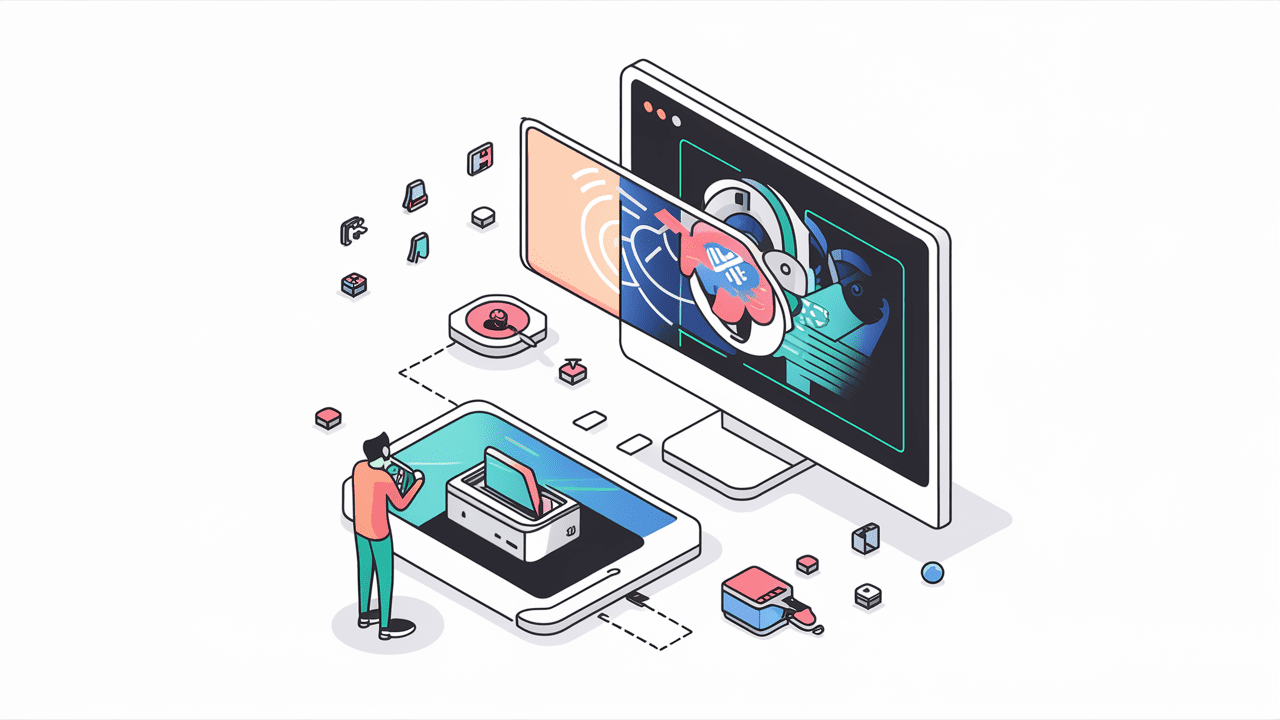
Image generated with Ideogram.ai
I know how hard it is to create content, especially for captivating audiences.
No matter what medium we use, written, sound, or visual; every single one requires thought and strategy to provide value from the content.
However, only some have enough time to generate quality content, especially for working people who double as content creators like me. Work and personal life could be in the way.
Things have changed in recent years as Generative AI has become more mainstream. This is because Generative AI has much potential to improve our content quality and efficiency if used effectively.
Generative AI, like ChatGPT, could make content creation easier. You might wonder, “Why don’t we ask the tool to create our content fully?” Well, my personal experience would say it’s a bad idea. An uncurated, entirely Generated AI content actually has terrible quality and needs rework. That’s why I suggest we use the tool to help us create content, not replace the works.
This article will discuss how we can integrate Content Creation with Generative AI. Let’s learn together.
When we talk about Generative AI, it will refer to the tools capable of generating new content that resembles human-generated content.
Many tools fall into the Generative AI category. For example, ChatGPT is a generative AI tool that could produce text content, or Midjourney, which could produce image content. With time, the tool has evolved to generate more human-like content than ever.
We would learn about integrating Generative AI tools into our content generation funnel. We would separate them into two parts: Text and Image.
Text Content
Text-generation Generative AI is a tool that could generate human-like text from the input that we give. The AI model could act closely to what we intended from the prompt we input. For example, generating emails, creating content drafts, planning social media schedules, etc.
In content creation, the text-generation model can help us in many ways. Here are some ways the model could help your content creation.
Content Ideation and Brainstorming
Suppose you are a content creator with a specific niche, e.g., data science, data engineering, machine learning, etc., and need new ideas to engage with the audience. You could prompt Generative AI models such as ChatGPT to generate new ideas.
For example, I use ChatGPT to generate content ideas with this prompt:
“I am a data scientist content creator, and I want to post content about why data science is important for business.
Generate me 3 content ideas that I can post about.”
The result is a list of content ideas explaining how to address the content. The list example is like this:
- Case Studies on Data-Driven Decision Making
- The Role of Data Science in Enhancing Customer Experience
- Emerging Trends in Data Science and Business Intelligence
The actual result contains a longer explanation of how to create the content and what we should include.
ChatGPT here facilitates thinking creativity, as we don’t ask directly for ChatGPT to create the content. It serves as a partner to spark ideas and validate our thoughts.
Content Outline Draft
The Generative AI tool is not only capable of generating ideas, but it can help us create a more detailed outline.
While it requires more validation, having an outline for our content would cut some time for us to create the content.
For example, I ask ChatGPT to create a blog outline with this prompt:
“Write a draft outline for a 300-word blog on why data scientists should learn about data engineering.”
The result is a draft outline for us to fill. Here are my results with the prompt above:
Title: Bridging the Gap: The Importance of Data Engineering for Data Scientists
Introduction (50 words)
Body
- Foundation of Data Science (60 words)
- Enhanced Collaboration and Communication (60 words)
- Increased Autonomy and Innovation (60 words)
- Career Advancement and Versatility (60 words)
The result also contains a more detailed explanation of what we should write and how to write about it.
Content Enhancement
As a content creator, one of the best advice we ever get is repurposing our content.
Sometimes, our content is already good enough, but a new development makes our previous content obsolete.
Or the content we have doesn’t get enough engagement as something is lacking.
Whatever you have before, it’s still content that is good enough as it is, and we can use it again for our next content. However, we still need to change something to improve their quality.
This is where Generative AI comes in to help enhance our previous content. Using the tool, they could bring a new perspective and structure missing from our previous content by reading and understanding our content.
For example, here is a prompt template you can use, and hypothetical results come from the ChatGPT.
I have my content in the text below:
##INSERT CONTENT##
Can you analyze what is wrong with them and provide detail ideas on how I can improve them to increase audience engagement.
Here is the result:
- Enhance the Title: Make the title more engaging and curiosity-evoking.
- Improve the Introduction: Include a compelling fact, question, or anecdote.
- Incorporate Real-world Examples: Use case studies or examples in the opportunities section.
- Provide Solutions to Challenges: Discuss ongoing efforts and solutions to the challenges mentioned.
- Add Visuals and Infographics: Use charts, visuals, and infographics to illustrate key points.
- Strengthen the Conclusion: End with a strong call to action for the readers.
As you can see, ChatGPT could provide detailed information on why our content is not working as expected and how to improve it.
Image Content
Unlike Text Content, Image Content relies on the visual aspect to captivate the audience.
Using a Generative AI tool to generate might seem controversial for some, but it’s still a valid tool to help us engage with the audience. However, image content often becomes supportive content that works alongside text content. That’s why we usually have the Text Content ready before the Image Content.
Let’s see a few use cases for Generative AI for Image content.
Image to Accompanying Text Content
The simplest use case you can do with Generative AI is to develop an image suitable for text content.
In social media, content with images usually has much more engagement and provides additional detail that the audience might miss. With endless social media scrolling, images could make the viewer stop on your content.
With Generative AI, you can use the prompt to generate an image suitable for your content.
In the example below, I use ChatGPT with a prompt that would execute DALL·E for image generation.
“I want to post content about working as a data scientist. Can you generate a simple image appropriate for the content I would post?”

Image generated with DALL·E 3
The result is an image of a data scientist working in front of multiple screens. It’s a simple image, but we can always tweak that to meet your needs.
Speaking of tweaking, we would discuss how Generative AI helps with image content personalization.
Personalized Content Creation
Personalized content for your audiences could create more engagement than standard image generation. This is because you cater every content specific to certain aspects of individuals. You can even more personalized the image content for email campaigns or customer gifts.
For example, you want to send content to celebrate your most valuable audience, Charlie. You can generate an amazing image that reflects his personality to show how much you care about your audience. Here is a sample prompt and image generated with Ideogram.ai.
“Typography “Happy Birthday, Charlie” with library book background and cat playing around.”

Image generated with Ideogram.ai
Of course, the personalization varies for each content creator. Do you want each individual to get a personal or slightly more generic image? The choice is up to you.
As a content creator, sometimes content creation can be mundane and cost us a lot of time. With Generative AI, we can make our work more efficient by delegating them to the model.
In this article, we learned how Generative AI integrates into our content creation by helping us improve our Text and Image content. The generative model could help us enhance or use our current content as a brainstorming platform.
Cornellius Yudha Wijaya is a data science assistant manager and data writer. While working full-time at Allianz Indonesia, he loves to share Python and data tips via social media and writing media. Cornellius writes on a variety of AI and machine learning topics.


